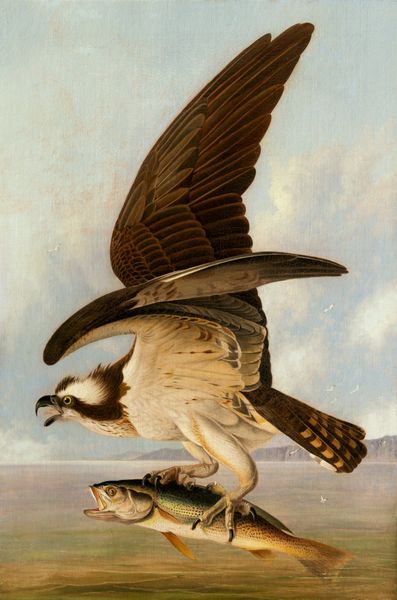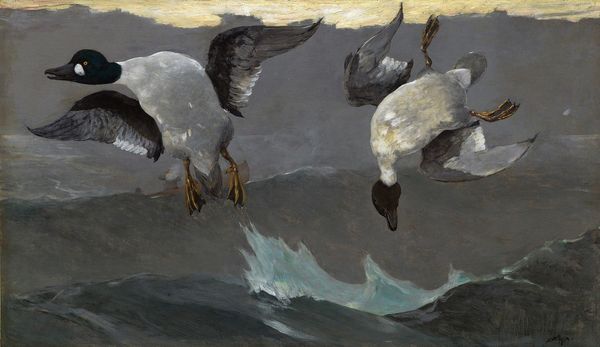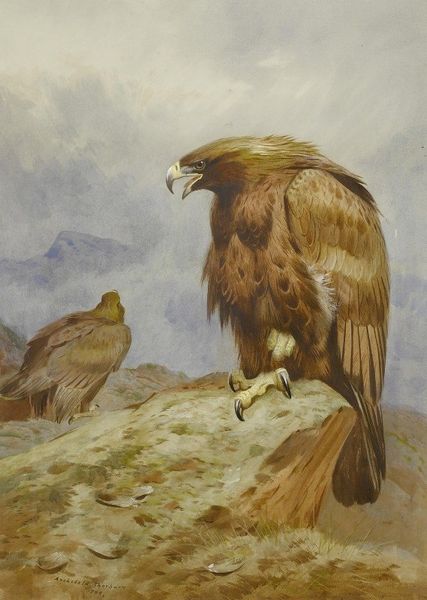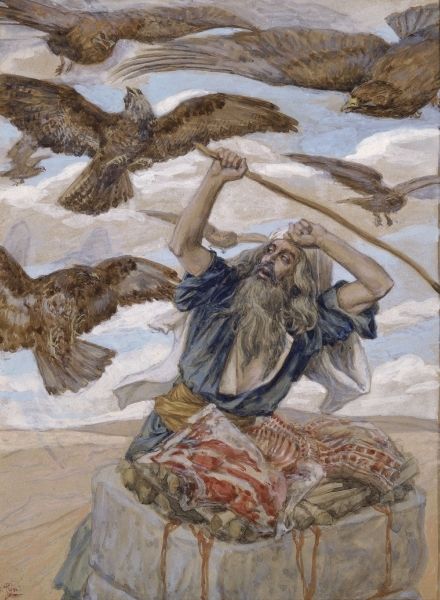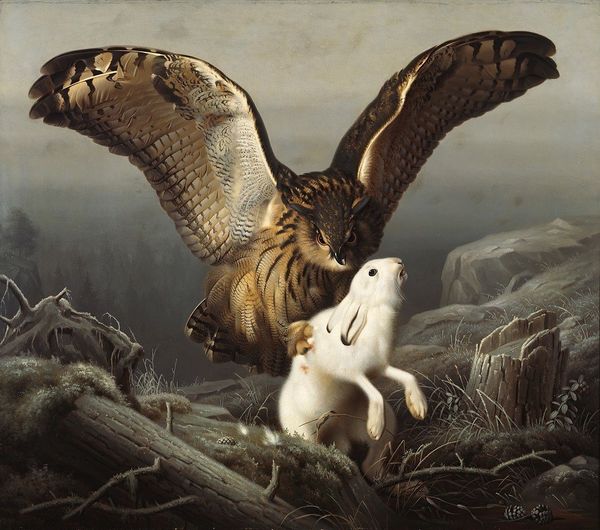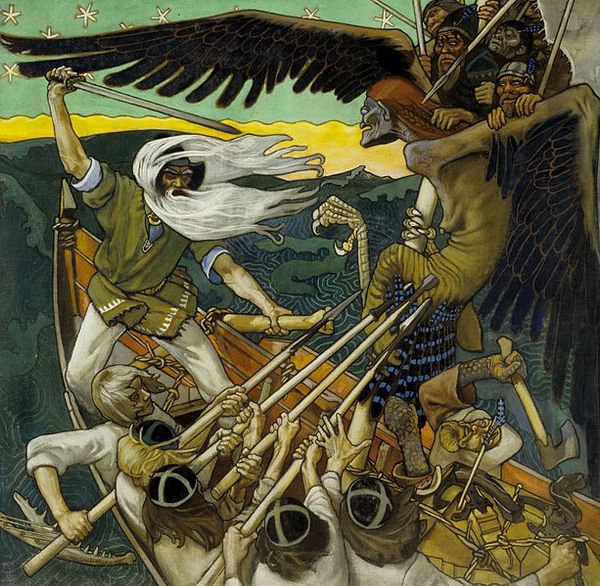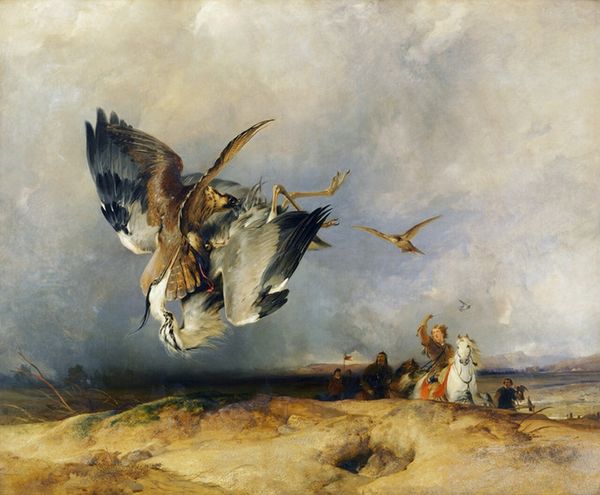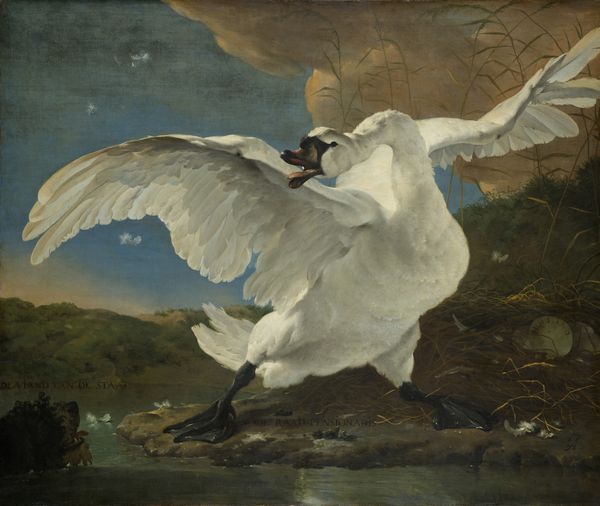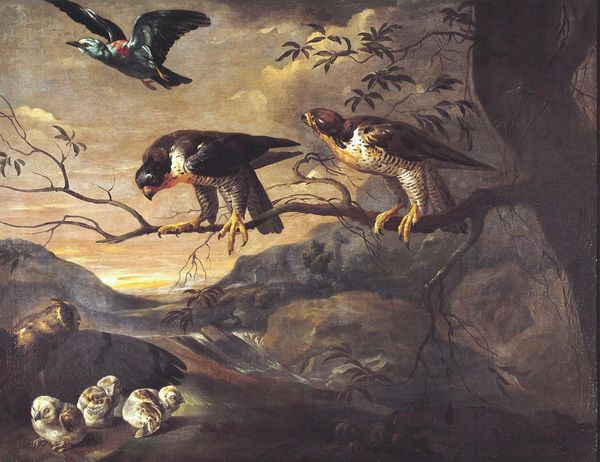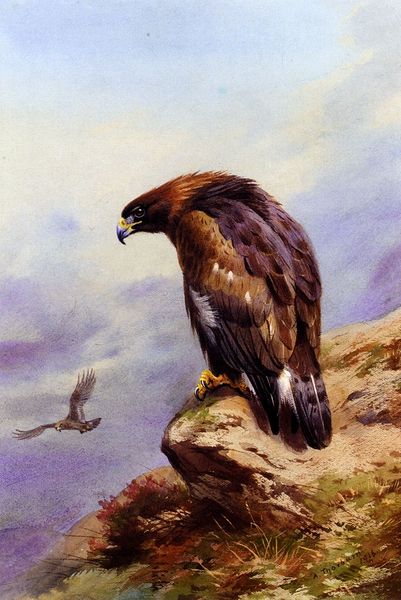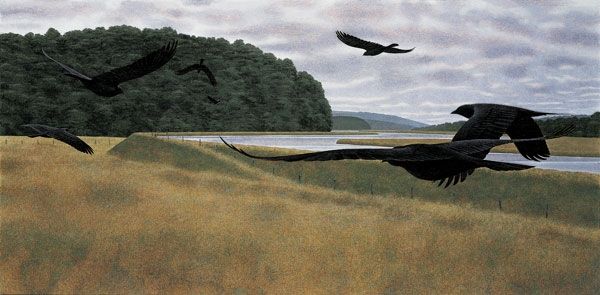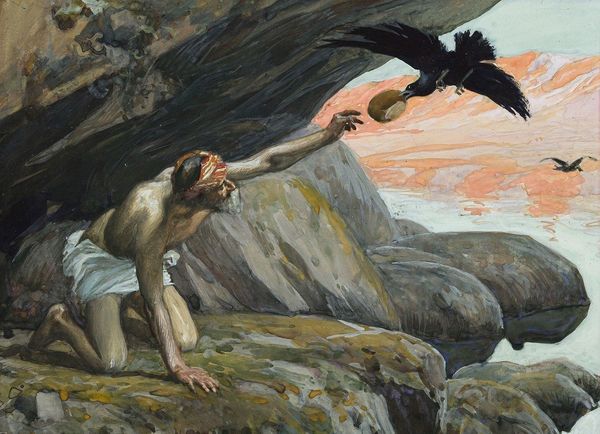
Copyright: Public Domain: Artvee
Editor: This is Hans Thoma's "Wondrous Birds," painted in 1892 using oil paints. The image feels simultaneously peaceful and a little unsettling to me. The birds are large, almost overwhelming against the landscape. How do you interpret this work? Curator: For me, "Wondrous Birds" sits at an interesting intersection of Romanticism and emerging ecological consciousness. Consider the date, 1892. While seemingly a tranquil scene, it was painted during a period of intense industrial growth and increasing environmental degradation. The birds, these 'wondrous' creatures, might be read as symbols of a threatened natural world. Editor: So, are you suggesting the painting carries a message about environmental issues? Curator: It’s not necessarily a direct protest, but it can be considered a commentary. Thoma and his contemporaries were becoming aware of humanity's impact on the natural world. What about the birds themselves strikes you? Do they seem idealized or realistic? Editor: They do seem majestic, but also vulnerable somehow, set against this wide open space. Curator: Exactly! Think about the power dynamics inherent in landscape painting. Often, the human gaze dominates the scene. But here, we are invited to consider the perspective of the birds, their freedom, and potentially, their precarity. It brings forth the tension between human progress and the preservation of the environment. Editor: That's a really interesting way to look at it. I initially saw it as a nice landscape, but now I see a more profound ecological subtext. Curator: These older works are like that – they have hidden layers, and prompt interesting new questions for the present day!
Comments
No comments
Be the first to comment and join the conversation on the ultimate creative platform.
